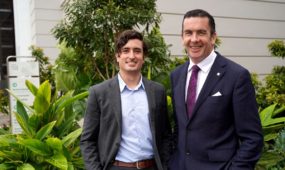Surveillance pods to protect satellites from space junk
Defence
A SPACE startup is developing turnkey surveillance pods to protect satellites from space junk.

Sign up to receive notifications about new stories in this category.
Thank you for subscribing to story notifications.

The InoSat nanosatellite, designed by South Australian company Inovor, is a cheaper alternative to directing space traffic and can also be used to study climate change, natural disasters and general agriculture on earth.
Inovor director Matthew Tetlow said the architecture of the InoSat makes it more functional and robust than current CubeSat satellites, with the section pointing to space monitoring space junk while the other section monitors Earth.
“It’s (the InoSat) still a CubeSat, which means you can stack multiple units together in a bus type formation – but the way it’s constructed makes it easier to assemble or pull apart if you want to get to a middle board.”
Inovor will be demonstrating the capabilities of its nanosatellite to more than 3500 delegates at the 68th International Astronautical Congress (IAC) in Adelaide at the end of September, at which Elon Musk hinted today he will reveal his latest Mars ambitions.
Tetlow said the InoSat fills a space industry niche for dual-purpose satellites that captured high-resolution images using more affordable equipment.
“In space there is a lot of debris and what this would do is not only monitor what’s out there but from a defence industry point of view, make sure other spacecraft or debris were not close to high valued assets,” he said.
“Then using a downward facing imager you could observe changes in climate, floods and be able to determine crop yields.
Dr Tetlow said conventional radar and optical imaging technology from the ground were either limited or very expensive space observation tools.
The InoSat is being built to work together with optical imaging in space to deliver more comprehensive results and battle the Kessler Syndrome.
This Kessler effect proposes that an increasing amount of space debris will lead to multiple collisions with satellites and spacecraft, resulting in a cascading chain of impacts.
The InoSat would provide an inexpensive way to monitor space debris, leaving the larger more complex satellites free for other purposes.
Similarly, the nanosatellite will work with other devices to study the earth’s dynamic natural changes using a two-metre resolution camera.
“Where we see this contributing is as a much cheaper option to larger exquisite systems, capable of taking up 80 per cent of the work,” Dr Tetlow said.
Tetlow said they created a system where you can get a constellation of about five InoSats and then follow an object for a longer period of time than is currently economical with a more complex satellite.
The InoStat is still in its prototyping phase but Inovor will display its potential for the defence industry, including the world’s leading space agencies, at the International Astronautical Congress, which will run from September 25-29 at the Adelaide Convention Centre.
South Australia is working to establish itself as a hub for space industry research and hosts a number of large multinational companies such as Boeing, BAE systems and Lockheed Martin.
It is also home to local space startups such as Fleet Space Technologies, which aims to connect up to 75 billion devices to the Internet of Things and Neumann Space, the creators of the world’s most efficient rocket.
Jump to next article



